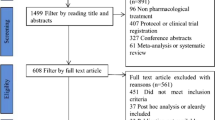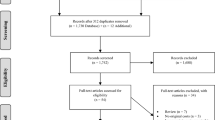Abstract
This study reports the results of a long-term economic evaluation of riluzole in the treatment of amyotrophic lateral sclerosis (ALS) versus best supportive care in the United Kingdom. The analysis included in this contribution aims to provide an update of the determination of the phase of the disease that is prolonged by riluzole and also to assess the quality of the life extension offered by riluzole by taking into account the patients' utility score. Specifically, the analysis provides a more specific estimate of the cost-utility of riluzole dependent disease stage, thereby providing a useful insight of the cost-effectiveness of therapy. A Markov model was used to assess the cost-effectiveness of riluzole versus best supportive care. Transition possibilities and the distribution of patients by health states were taken from a cohort of 954 patients drawn from a large randomised, double blind, placebo-controlled, multicentre trial between 1992 and 1994. Costs associated with riluzole included the acquisition cost and bi-monthly monitoring for raised ALT levels. Patient assessed utilities were collected by use of the SG technique from two centres (King's, London and Preston) in the UK. Four distinct health states were used corresponding to mild, moderate, severe and terminal states. Applying the Markov model and extending the transitional probabilities using linear interpolation, the base case cost per life year gained was estimated at £15,192 while applying Standard Gamble utility scores, the base case cost per quality-adjusted life-year (QALY) was assessed at £22,086. Carrying out a probabilistic sensitivity analysis, the cost per QALY was estimated at £22,236 with standard deviation of £612. The results of the long-term analysis also show that riluzole on average increases survival in ALS patients by 6 months with approximately 5 months of the additional life gained in the early disease states, of which 4 months is spent in disease state 2, where quality of life is relatively high. However, the model is sensitive in the way in which the long-term transitional probabilities are estimated. Using averages of the first nine cycles, the cost per QALY would increase to £33,420 with standard deviation of £972. Thus, this analysis highlights some of the difficulties associated with extending the short clinical effectiveness data; one way forward would be to obtain long-term observations data for both groups.
Similar content being viewed by others
Author information
Authors and Affiliations
Rights and permissions
About this article
Cite this article
Tavakoli, M. Disease progression in amyotrophic lateral sclerosis. Eur J Health Econom 3, 156–165 (2002). https://doi.org/10.1007/s10198-002-0110-0
Published:
Issue Date:
DOI: https://doi.org/10.1007/s10198-002-0110-0




